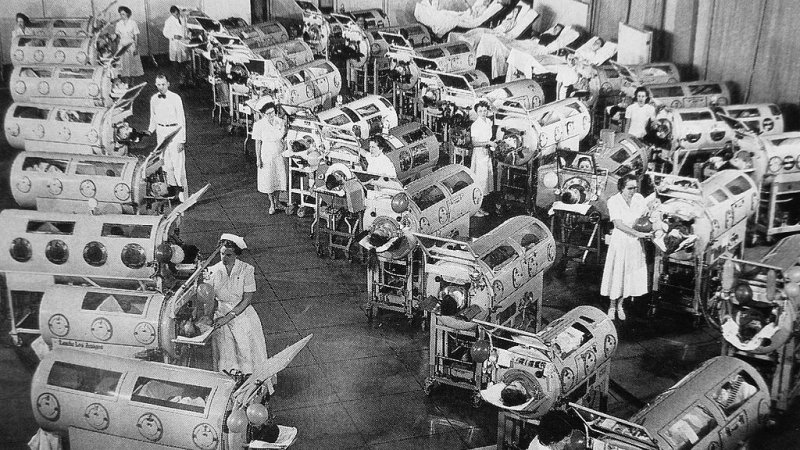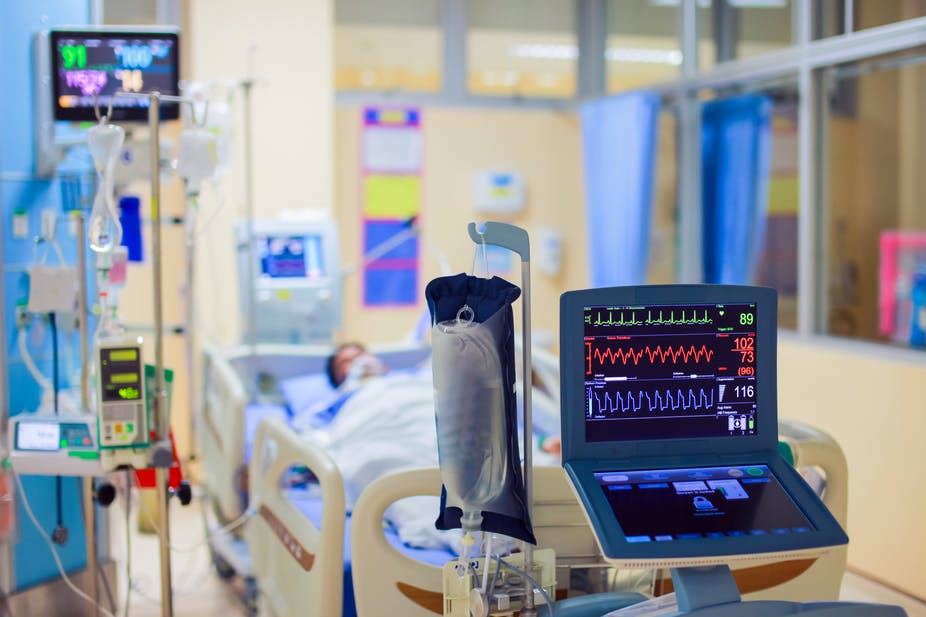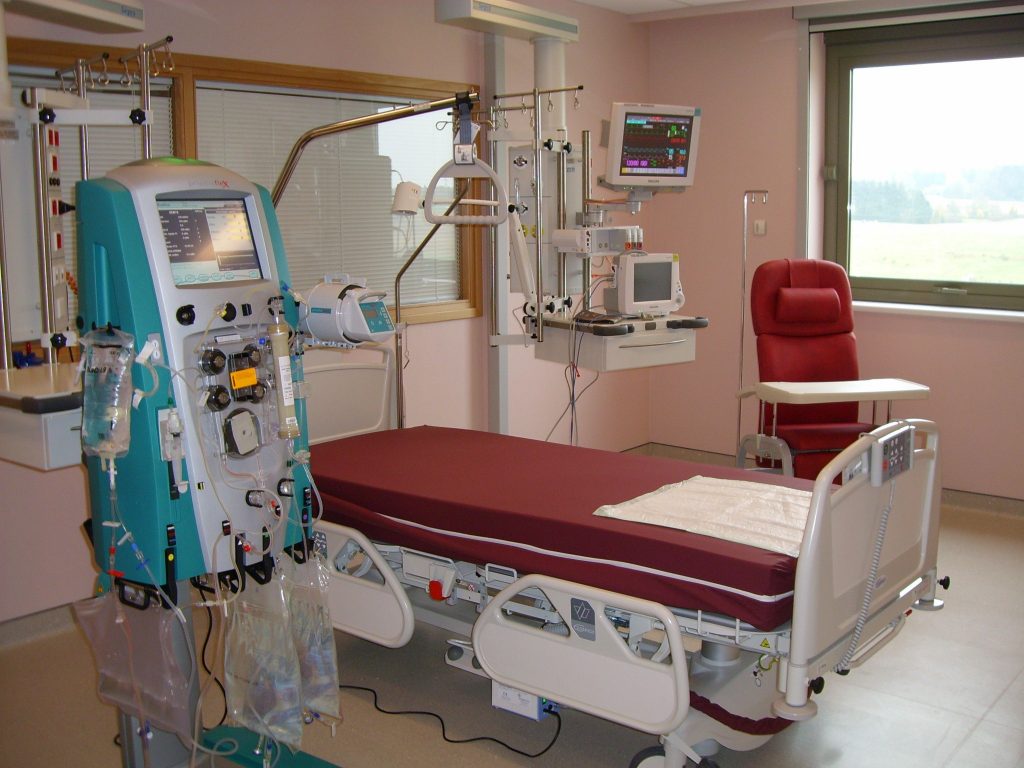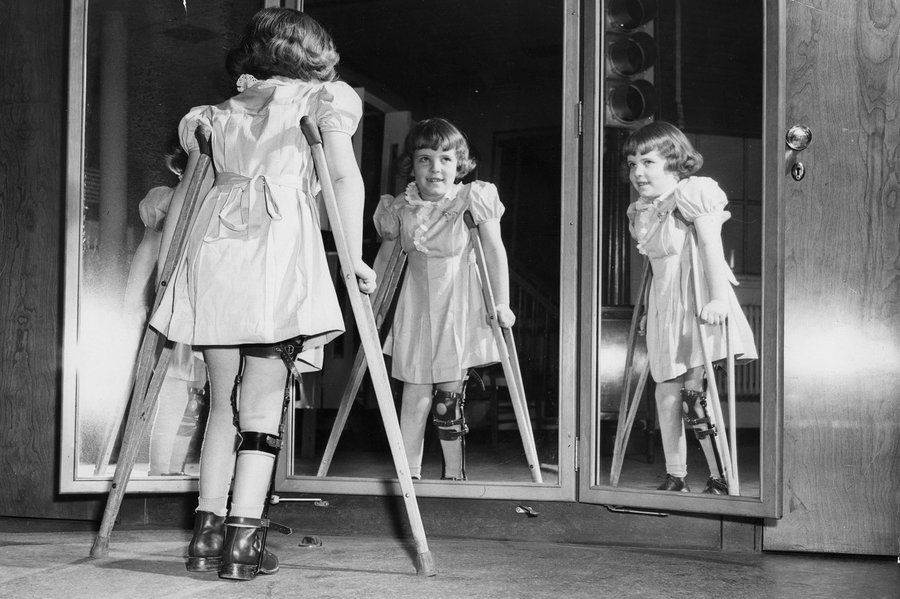The outbreak that invented intensive care units: Whenever there is a medical emergency, the machine saves the lives of seriously ill people. At one time, this machine was made at the time of one such epidemic. Intensive care units and mechanical ventilation machines were introduced into the world in this way.
Today hospitals around the world use it, and it has an important role in the treatment of the COVID-19 epidemic spread by Coronavirus. In this era of the Corona crisis, ICUs and ventilators are being named a lot, but 68 years ago, these machines were not in existence.
In August 1952, an epidemic similar to the coronavirus spread in which thousands of people died due to respiratory failure. That disease was polio.
The outbreak that invented intensive care units which is the ‘ICU’

68 years ago
At the 500-bed Blagdam Hospital in Copenhagen, Denmark, doctors, and nurses were so helpless by the flood of patients that they could not help them. Most of these patients were children. At that time, polio was a severe viral infection (virus infection) that had no cure.
Many people were getting infected with this virus without any symptoms. In some cases, the virus was attacking the nerves present in the spine and the brain. There was a danger of paralyzing the patient, especially in the legs.
According to the Health Service of Britain, in the event of a paralytic stroke on the muscles of the respiratory system, this disease can prove fatal. In the middle of the last century, Copenhagen was one of the areas most affected by the polio epidemic.
Polio epidemic

According to an article published in the science journal ‘Nature,’ “50 people infected with polio were coming to the Blagdam Hospital every day. Six to 12 people were experiencing respiratory system failure every day.”
“In the first week of the epidemic, 87% of the patients who were coming in most of them were in the stage of polio infection when the virus was hitting the brain of the infected person or on the nerve which controls the breath. More than half of these patients were children. “
But a doctor solved this problem and wrote an important chapter in the history of modern medical science doctor Björn Aje Ibsen was an anesthesia specialist by profession, and he spent a long period of his career in Boston, USA. Seeing the health crisis of our country, solved it, and saved the lives of thousands of people.
Why is ICU so important?

“The patients whose vital organs stop functioning and need the support of the life support system,” says Philippe Gent, a doctor overseeing people infected with Coronavirus in one of Switzerland’s largest hospitals. It is important because the patient’s life is threatened. “
“The condition of the patient in the ICU can be closely monitored, and treatment can be changed as per the need. Special care for the patient can only be maintained in the ICU. The ratio of doctors and nurses per patient in this part of the hospital is the highest. The doctors who see the patients admitted to ICU are highly qualified. “
Perhaps that’s why ICU is also called intensive medicine. The importance of intensive care units is not only because special care is taken of patients here, and hygiene maintenance of high standard is done. The availability of these machines becomes very important in case of failure of the kidney, heart, and respiratory system.
Doctor Philip Gent says, “Often people have trouble breathing. This problem is related to the lungs. So patients admitted to the ICU are breathed in artificially with the help of respirators.”
Respirators made of iron

But when the polio epidemic spread in Denmark, there was only one respirator in Copenhagen, and that too was made of iron. Apart from this, there were also six external respirators.
In an article published in 1953, Chief Henry Sai Alexander Lassen of Bleddam Hospital wrote, “Of course at the time of the pandemic attack, this machine was completely inadequate.
But we had to work on it. We were finding a way. We were not Wanted that such a situation would come when we had to decide which patient should be treated with a respirator and whose not. “
The moral dilemma that Dr. Henry was going through in those days, many doctors are facing the same situation even today during the Corona crisis. The iron-made respirator at Blegdam Hospital was invented in 1928. It was like a capsule.
The patient’s body was put into it. This machine is used to create a vacuum around the patient’s body. This forced the patient’s ribs and lungs to expand so that air could enter them.
The difficulty came when the patient was unconscious and was unable to swallow his saliva or bear things in the stomach. The problem of suffocation was often encountered with such patients.
What did doctor Ibsen do?

Doctor Ibsen developed a system for Bleddam Hospital, which solved the problem of the hospital. One of his patients who received treatment for the first time on the new machine was a 12-year-old girl. Her name was Vivi. Vivi was on the verge of dying due to paralysis caused by the poliovirus.
Another medical practitioner, Preben Barthelson, who interviewed Ibsen about this medical case, said, “Everyone was hoping that Vivi would die. But Doctor Ibsen proposed to revolutionize traditional treatment.”. “
“Dr. Ibsen said that patients with polio should be treated in the same way as patients with surgery. They thought that air should be delivered directly to the patient’s lungs so that his body could rest, and then he would slowly Start breathing.
Idea of tracheostomy

Dr. Ibsen also suggested the use of tracheostomy. Under this medical procedure, a hole is made in the neck of the patient. Through this hole, oxygen is supplied to the patient’s lungs through a rubber tube.
At that time, tracheostomy was used during the operation, but hardly anyone has thought about its use in the hospital ward.
Chief Henry of Bleddam Hospital was not sure that Doctor Ibsen’s approach would work. But the situation was so serious that they approved it. The miracle happened when Vivi’s life was saved by way of Dr. Ibsen.
But there was a bottleneck in this as well. The machine was not the way to deliver air through the rubber tube to the lungs. It had to be operated by hand. A doctor or nurse had to create air pressure with the help of a pressure knob or bag. For this, Dr. Henry had to take duty in many medical staff shifts.
Establishment of ICU ward

Doctor Henry explained, “After that, we were in a position to help all the patients who were suffering from some kind of breathing problem. Polio patients had a mortality rate of less than 87 percent to 31 percent
The following year, a permanent care unit ward was established permanently at Bleddam Hospital, and later the rest of the world adopted it as well.
Today, at the time of the pandemic of COVID-19, the whole world is suffering from ICU beds and mechanical ventilators because it is becoming difficult to provide medical facilities to the needy people infected with Coronavirus.
Few people know that under the same circumstances about 68 years ago, an anesthesia expert solved this difficult challenge.







Add Comment